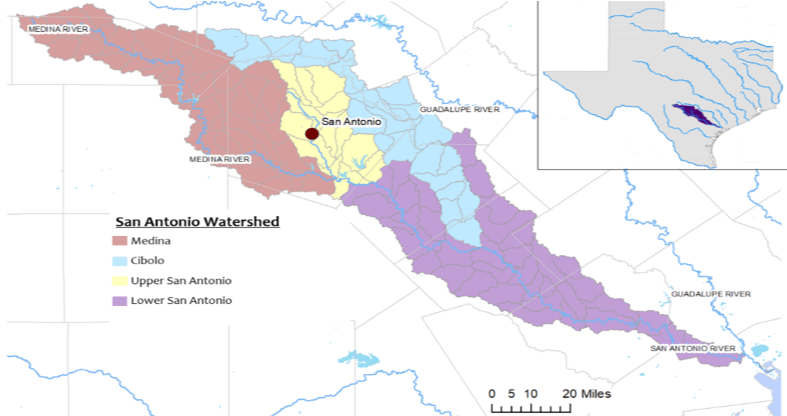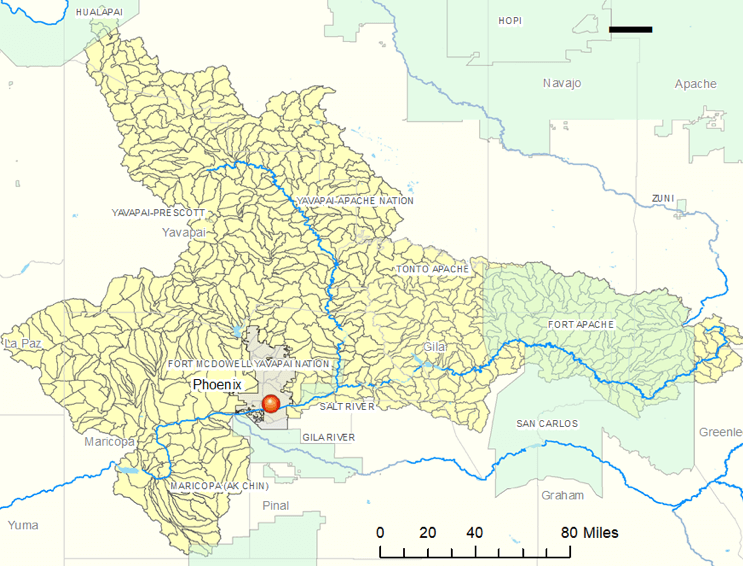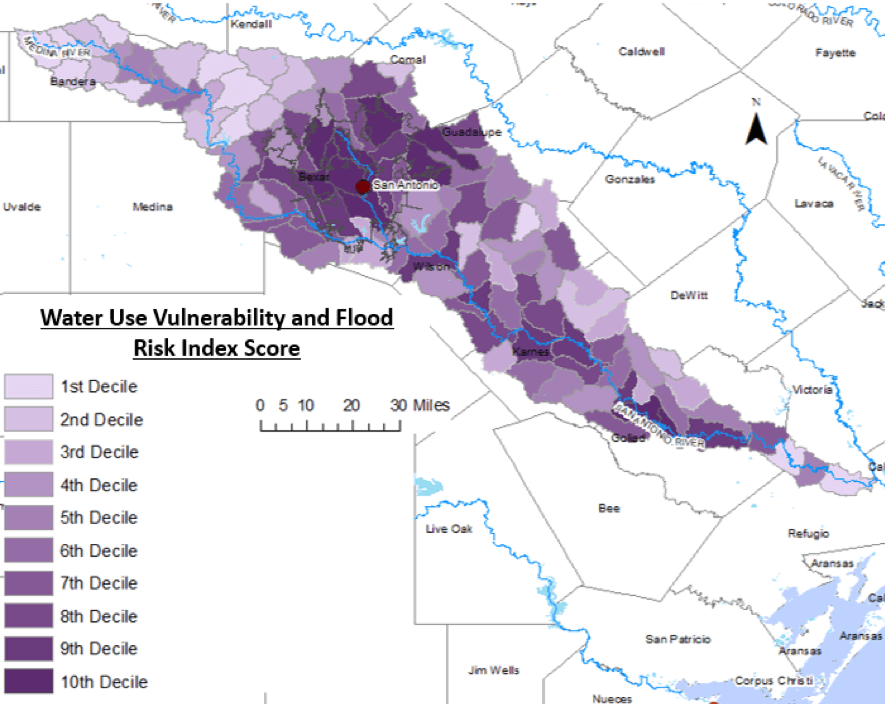Integrating Equity Into Integrated Water Management Planning
Water is a critical resource. We depend on it for our communities’ health, economies, and environmental and social resilience. But managing our available water resources to meet those diverse needs is a complex exercise.
Over the past two decades, Integrated Water Resource Management (IWRM) has emerged as an approach to navigating these complexities, providing a framework to help break down traditional silos and integrate the systems that manage water supply, wastewater, and stormwater. However, traditional efforts at IWRM have often overlooked one key component: water equity.
The Project: WRAP (National Water Reuse Action Plan) Pilot Project
Over the past year, River Network has coordinated a project to explore how water equity can be better incorporated across spaces and sectors to help guide IWRM efforts, in particular in water-constrained regions and leveraging the relationships developed through the Urban Waters Federal Partnership (UWFP) program. The UWFP is a national program active in 20 designated communities across the U.S., in which federal agencies work with state and local agencies, nongovernmental organizations, community-based organizations, and other local partners to help reconnect urban communities with their waterways through community-led revitalization efforts.

The 240-mile San Antonio River springs from the Edward Aquifer in Bexar County and flows through 15 counties in southern Texas to its confluence with the Guadalupe River towards the San Antonio Bay and the Gulf of Mexico. Courtesy Industrial Economics.
Through the WRAP Pilot Project, we sought to expand the stakeholders engaged in IWRM and water reuse activities and to advance inclusive approaches to achieving water reuse goals in the context of IWRM. We focused on two pilot sites, both of them UWFP locations: the San Antonio River Watershed (Texas) and a critical tributary to the Rio Reimagined’s Salt River and Middle Gila watershed—the Upper Verde watershed (Arizona). The Project, the initial phase of which is now in its final stages, is a partnership between River Network; the U.S. EPA Office of Water; the National Park Service Rivers, Trails and Conservation Assistance Program (NPS-RTCA); nonprofit partner the Consensus Building Institute (CBI); and the environmental consulting firm Industrial Economics (IEc).

The Verde, Salt, and Gila Rivers converge just north of Phoenix; their watersheds comprise the central and southern regions of Arizona. This area includes the Rio Verde Basin to the north. Courtesy Industrial Economics.
The Process
The Project incorporated two separate levels of analysis:
- Extensive stakeholder engagement. This process, led by CBI, included extensive interviews and facilitated discussions with UWFP members to examine how water planning efforts might be expanded to include important and previously underrepresented stakeholders, and to further emphasize water reuse activities.
- Water equity mapping. Here, IEc used the EPA’s Recovery Potential Screening Tool (RPS) to create numerous maps profiling each watershed using a number of indicators. The RPS tool, originally designed to help users identify priority areas for watershed restoration, includes 284 unique environmental and social indicators from multiple national databases. These can be combined to generate index scores for useful comparisons of a location’s relative social vulnerability, watershed health, present and projected environmental vulnerability, and more.

The RPS tool allows users to generate index scores for useful comparisons of a location’s relative social vulnerability, watershed health, present and projected environmental vulnerability, and more. Courtesy Industrial Economics.
What We Learned
Through the Project, we have identified a number of steps that can be taken immediately to advance water reuse, strengthen integrated water resource management, and advance water equity across both watersheds. We’ve also seen specific ways that EPA and other federal assistance—both technical and financial—can be deployed to support those actions.
Participating with River Network in the EPA WRAP grant Equity and Engagement Work Group provided us a great opportunity to reinvigorate our long-standing community outreach practices with a renewed focus and commitment to ensuring we actively engage and connect with our more vulnerable communities.
-Michelle E. Garza, San Antonio River Authority
In addition, we have drawn some lessons that are more broadly applicable to communities across the U.S. that want to both engage more stakeholders in IWRM and water reuse activities, and advance inclusive approaches to achieving water reuse goals:
- It is important to clearly define what we mean when we describe groups as ‘underrepresented’ or ‘under-served’ – and those groups may vary by location. For example, in one of the pilot locations participants shared that small, rural communities tend to be underrepresented in state water planning processes, even while in other planning efforts those same communities have louder voices and enjoy greater influence. Local stakeholders in the two locations identified a broad range of groups as ‘under-represented,’ suggesting that future efforts should focus on groups that included low-income urban neighborhoods, Tribes and other communities of color, and representatives of small, rural municipalities.
- Engaging communities directly takes time and resources. Trust is a key component of effective IWRM efforts, and building trust takes time. A challenge of projects such as this pilot, for which future funding is uncertain, is the time it takes to build the foundation on which to advance more equitable IWRM and water reuse efforts at the watershed scale. There are multiple areas of effort, ranging from building additional relationships with community partners, demonstrating a commitment to support meaningful long-term outcomes for impacted communities, establishing the necessary credibility for partners to engage in creative, multi-purpose, multi-stakeholder planning across traditional silos; working with community-based organizations to engage those most impacted by historic water-related inequities, who may stand to gain the most from water reuse and other integrated water planning efforts; and working through existing structures and processes to develop new approaches and sustainable outcomes to water planning at the neighborhood, local and/or regional levels.
- “Equity mapping” can be a valuable first step to help ‘set the table’ among stakeholders. Initial stakeholder assessments are a powerful tool to begin exploring questions related to water equity. This step helps identify what communities, neighborhoods, or community-based organizations have been historically missing from water planning efforts, despite having needs that could be addressed through water reuse or other integrated planning. Preliminary water equity mapping can similarly be a useful springboard for early conversations about how different communities experience water challenges and/or disparities, how to identify or measure these disparities, how these issues might be addressed through water reuse or other integrated planning, and what lessons can be learned from other communities’ approaches and solutions.
- EPA’s Recovery Potential Screening (RPS) tool is a valuable resource to support equity mapping efforts. The RPS tool is extremely valuable as a repository of data for 284 social, environmental, and stressor indicators relevant to every geographic region. Given this, it has great potential to supplement IWRM and efforts such as this pilot, as it can help to jumpstart the visualization process and shed light on dynamics within and across watersheds.
- UWFPs can play important roles in advancing water equity through IWRM, water efficiency, and water reuse planning. Among their many strengths, they can provide technical assistance developing cross-cutting resources such as equity mapping tools, share funding opportunities, offer support and guidance to help partners secure funding, and serve as a vehicle to communicate consistent, credible messaging across the watershed.
- Outside interests wishing to support local IWRM efforts through funding or technical assistance are more impactful when they can demonstrate long-term commitment and clearly communicate their interest in advancing that effort. This includes outlining clear, consistent opportunities for continued engagement between local stakeholders and external agencies or service providers, and a commitment to building the infrastructure and securing the resources needed to sustain an IWRM initiative over time.
As River Network wraps up this initial phase of the WRAP Pilot Project, we are working with our partners to secure the necessary technical and financial resources that will enable local stakeholders to implement the priority actions we identified to help advance water reuse, IWRM, and water equity across the San Antonio and Verde watersheds.
Additional Resources
River Network’s recorded webinars on Integrated Water Resource Management:
- Introduction to Integrated Water Management with speakers from the Broadview Collaborative and Colorado State University One Water Solutions Institute
- Sewage Pollution as a Catalyst for Integrated Water Management with speakers from the Metropolitan Sewer District of Greater Cincinnati and New Jersey Future
- Water Scarcity as a Catalyst for Integrated Water Management with speakers from the Washington Department of Fish and Wildlife and San Francisco Public Utilities Commission
- Strengthening Flood Resilience Through Integrated Water Management with speakers from the City of Cedar Rapids and the Sewerage and Water Board of New Orleans
Integrated Water Management; River Voices (January 2017 Issue)
EPA’s Urban Waters Federal Parntership





